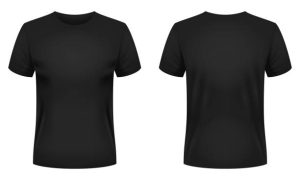How To Choose The Right T-Shirt Materials

People of all ages consider the T-shirts wardrobe to be a must-have. They are flexible and cozy and come in several designs. Still, a T-shirt’s comfort and lifetime rely on its component materials. The choice of material could drastically affect the look and feel of a T-shirt. So, how should one choose which is best?
Different materials have special qualities. Some are soft, while others are lightweight or elastic. Knowing these qualities will help you select the best one for your needs. This page will cover the important factors to consider while choosing T-shirt materials.
- Consider the Purpose of the T-Shirt
Think about where and when you will wear the T-shirt. The purpose of the T-shirt is to help determine the right material. If you work out and require a T-shirt, for example, go for a lightweight, breezy fabric. Polyester or blends with moisture-wicking properties are perfect for this.
Cotton is a traditional material for laid-back clothing. It is smooth and airy, perfect for daily usage. If the T-shirt is for a formal event or layering, materials like silk mixes or elastic textiles like spandex might present a professional image.
Consider seasonal obligations as well. Summer demands light textiles like organic cotton or linen. Thicker materials such as cotton mixed with a fleece lining help to keep you warm in winter.
If you value diversity and appreciate trends, joining a tshirt club can be a great way. Many clubs provide monthly T-shirt memberships with varying designs and materials appropriate for different events. This is a great approach to play about with fabrics, from soft organic cotton to moisture-wicking combinations.

- Check for Comfort and Feel
The selection of a T-shirt largely relies on comfort. The texture of the cloth on your skin could either improve or harm your experience. Cotton is among the most beautiful fabrics since it is soft and smooth. Even allergic people should find it mild on their skin.
If you like something even softer, try modal or bamboo. These materials are well known for their low weight and silky texture, so sensitive skin would profit from them. For a stretchy and snug fit, search for materials including spandex or elastane.
If possible, touch the cloth before you buy it. Some T-shirts feel scratchy or rough, even if they look great. Comfort is personal, so always choose what makes sense for you.
By focusing on comfort, you ensure that the T-shirt becomes a go-to piece in your wardrobe.

- Evaluate Durability
Durability is crucial, especially if you plan to wear a T-shirt regularly. Cotton is strong for daily use, even if it may shrink after multiple washings. For a long-lasting T-shirt, consider combinations of cotton and polyester. These fabrics combine the cotton’s softness with the polyester’s strength.
Nylon and spandex are also strong materials. Perfect for sportswear, they withstand rips and stretching. If you want luxury, search for fine cotton—Pima or Egyptian cotton. These are softer and last longer than regular cotton.
How you treat your T-shirt also affects durability. Always wash as directed on the label. Choosing a strong material and caring for it ensures your T-shirt lasts long.
- Think About Breathability
Breathability is absolutely vital, especially in warmer climates or after intense exercise. A T-shirt that allows breathing keeps you cool and comfortable. Cotton is the most breathing-friendly cloth available. Ideal for hot days, it naturally lets air flow and absorbs sweat.
For even better moisture control, try blends of polyester and other textiles with moisture-wicking properties. These products keep you dry by pulling sweat away from your skin. Breathable options also include modal and bamboo. Their low weight aids in body temperature control.
Avoid items that absorb heat, such as synthetic textiles free of moisture-wicking qualities. These can be hot and awkward.
Choosing breathable fabric ensures that your T-shirt stays fresh all day. This is especially important if you travel regularly or live in a tropical environment.

- Factor in Style and Appearance
The material of a T-shirt determines its look. Cotton is a laid-back and casual look appropriate for daily use. For a modern, sleek style, use polyester or spandex combinations. These are sharp from their glossy finish.
Think of T-shirts with silk or satin combinations for significant events. These materials are rich. The unique texture of linen T-shirts also reflects a laid-back, casual lifestyle.
The material also influences the fit. Although loose cotton fibers feel more relaxed, stretchy materials like spandex create a tight and fitting look.
Choose a textile to highlight your intended look. This ensures that your T-shirt feels great and looks amazing too.
- Budget and Value
Your budget should still be given great thought. Some products cost more than others. For example, basic cotton T-shirts are often really reasonably priced. Still, premium cotton—such as Pima or organic cotton—does cost extra.
If you are looking for a good quality feel, budget-wise, long-lasting synthetic fabrics like polyester, bamboo, or modal T-shirts are well worth the buy. Though more expensive, their comfort and durability make them great value.
Think about how often you would wear the T-shirt. A little more expense on sturdy and comfortable clothes will eventually enable you to save money. A cheap T-shirt worn fast costs more as time passes.
Conclusion
Choosing a T-shirt comes from knowing your needs. Think about the cloth’s lifetime, comfort, and intended use. See whether the materials fit your style and allow breathing. Do not deter your financial situation, either. The perfect T-shirt material should feel great, look amazing, and last long. These rules will enable you to confidently choose a T-shirt that fits your lifestyle.



